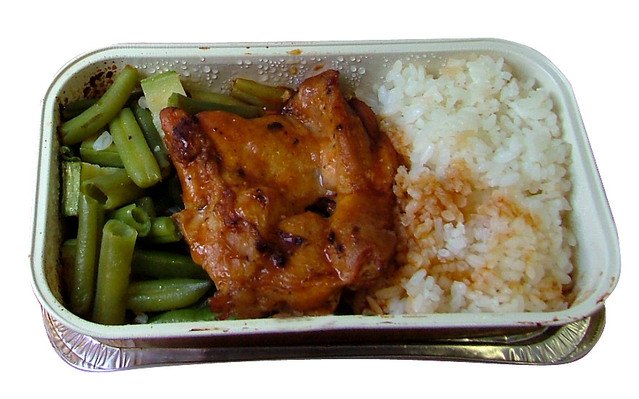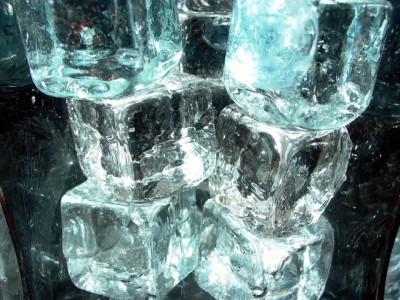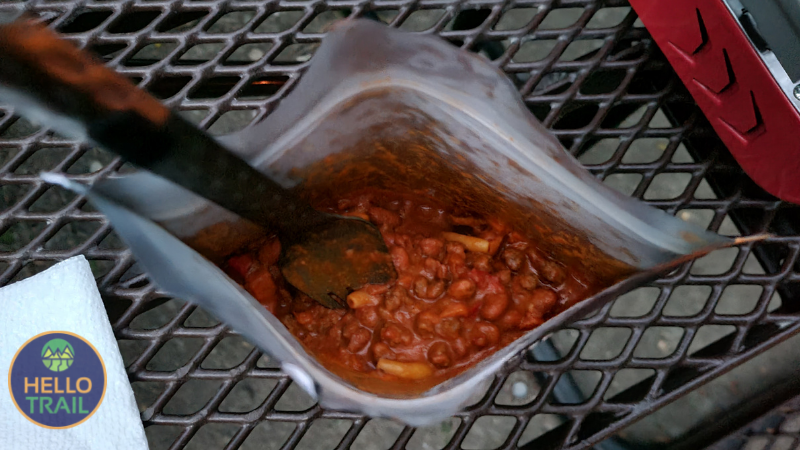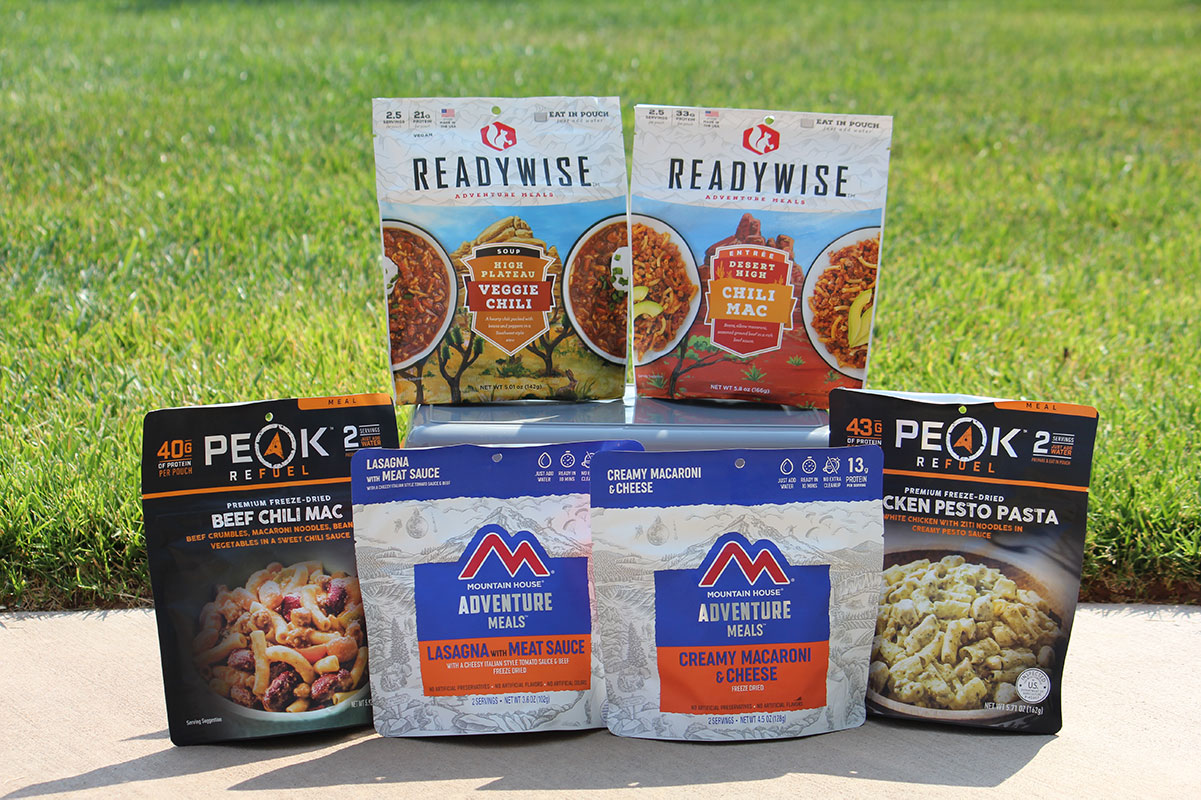Are you ready for a camping adventure? Nothing beats the freedom of the great outdoors, but when it comes to keeping your food fresh and cool, it can be a challenge.
Don’t worry, we’ve got you covered! This comprehensive guide will show you everything you need to know to keep your food cold while camping, so you can focus on enjoying your time in nature without worrying about your perishables.
First, we’ll help you choose the right cooler for your needs and show you how to pre-cool your food before packing it up.
We’ll also give you tips on freezing food and drinks, using ice packs, and explain the difference between ice blocks and ice cubes.

And don’t forget about drinking water – we’ll show you how to safeguard it to ensure you stay hydrated on your camping trip.
So grab your gear and get ready to learn how to keep your food fresh and cool while camping!
Key Takeaways
- ?️ Investing in a high-quality cooler can help ensure your food stays fresh and safe throughout your camping trip
- ❄️ Pre-cooling your food items before packing them in the cooler can help keep the cooler colder for longer and prevent the food from getting spoiled
- ? Freeze water bottles beforehand and use them as both an ice pack and a source of hydration to ensure access to clean drinking water
- ? Consider adding dry ice to your cooler for ultra-cold food, but be warned of the precautions necessary for safe handling
- ? Storing your cooler in a shaded area or using a heavy blanket to wrap around it can help maintain a consistent temperature inside the cooler
- ❗ Use separate coolers for drinks and perishable items like meat and dairy products to prevent frequent opening and temperature fluctuations.
- ?️ Bring non-perishable meal options like beef jerky, canned meat, nuts, dried fruit, and firm cheeses, along with select vegetables with a longer shelf life
1. Choosing the Right Cooler
Now, let’s talk about choosing a suitable cooler for your camping trip so you can keep your food cold and fresh.
When it comes to camping, it’s essential to invest in a cooler that will keep your food at a safe temperature for the duration of your trip.
Cheaper styrofoam coolers may seem convenient, but they often lack the insulation to keep food cold for extended periods. This can lead to spoiled food and potential food poisoning, quickly ruining your camping experience.
One top-quality cooler option is the YETI Tundra. While it’s a bit pricier than other options, ensuring your food stays cold and fresh is worth the investment.
The YETI Tundra offers thicker walls and better insulation, which helps maintain a constant temperature for extended periods. You won’t have to worry about food spoiling, even camping in hot temperatures.
While I don’t tend to bring too many perishable food items to the campsite, our Yeti Tundra Haul Cooler joins us on most camping trips. Leaving it in the back of my Subaru Outback and opening it about every few hours, the ice inside stays solid for about 3-4 days.

Electric coolers are another great option to consider if you have access to power (my favorite is this one from Dometic). They work by using electricity to cool the cooler’s contents, which means you won’t have to worry about ice melting or running out of cold packs.
Investing in a high-quality cooler like a YETI or considering electric coolers can help ensure your food stays fresh and safe throughout your trip.
Don’t risk spoiled food and potential food poisoning by using a cheaper, less effective cooler – choose a cooler that will keep your food cold and fresh for the entire camping trip.
Plus, a quality cooler can help you keep food from freezing when you go camping in the winter. You might as well get as much bang for your buck year round!
2. Pre-Cooling Your Food
Pre-cooling your grub will ensure it stays fresh and delicious throughout your camping adventure, making every meal a memorable experience.
Before packing your cooler with food, take the time to pre-cool your food items. This will help keep the cooler colder for longer and prevent the food from getting spoiled.
One way to pre-cool your food is to refrigerate it for a few hours before packing it in the cooler.
This is especially important for perishable items like raw meat, dairy products, and fresh fruits and vegetables. By starting with chilled food, you can extend the life of your cooler’s ice and keep your food at a safe temperature longer.
Another option is to freeze your food items before packing them in the cooler. This is particularly useful for longer camping trips, as frozen food will stay colder for longer than chilled food.
Just leave some space in the cooler for the food to expand as it freezes.
You can also fill empty water bottles with water and freeze them to use as extra ice packs.
Consider using ice blocks to pre-cool your food. Unlike loose ice cubes, ice blocks melt slower, providing more effective insulation.
You can buy pre-made ice blocks or make your own by freezing water in large containers. Wrap the ice block in a towel or blanket to prevent cross-contamination.
Whether you choose to refrigerate, freeze, or use ice blocks, taking the time to pre-cool your food will help keep the cooler colder for longer and prevent your food from spoiling.
3. Freezing Food and Drinks
You’ll love the convenience and peace of mind of freezing your favorite camping foods and drinks in advance!
This is a great way to keep your food cool and fresh, especially if you’re going on a long camping trip.
Before you start freezing your food, ensure you have enough space in your freezer and label your frozen items with the date you froze them.
Freezing water bottles instead of using loose ice cubes is a great option to avoid a pool of water in your cooler.
Frozen water bottles also act as an extra source of drinking water and can be used to keep your food cold.
Remember to double bag raw meat and other potentially contaminating ingredients before freezing and packing them.
Tracking how long your frozen items have been in the freezer is important. Make sure you defrost your food in advance before cooking it.
This will give it enough time to thaw and make cooking easier.

If you’re camping for a week or more, consider using a larger block of ice instead of basic ice cubes.
A larger block of ice will have more effective insulation. It will keep your cooler cold for a longer time.
Freezing your food and drinks in advance is a great way to keep them cool and fresh during your camping trip.
4. Using Ice Packs
Using ice packs is like having a compact and efficient freezer in your cooler, keeping your camping meals and snacks fresh and perfectly chilled.
Unlike regular ice cubes, ice packs freeze colder and last longer, making them a practical and convenient option for any camping trip.
These packs are also more compact than ice cubes, allowing you to maximize the storage space in your cooler.
One great advantage of ice packs is that they don’t leave unnecessary water inside the cooler, causing soggy food.
This is especially important when packing delicate foods like cheese or raw meat, as you want to avoid cross-contamination or spoilage caused by excess water.
In addition to being more practical, ice packs are also more economical. Unlike regular ice cubes that melt quickly and must be replaced often, you can reuse ice packs for many camping trips.
Just make sure to store them in a separate cooler or storage space away from food to avoid any potential contamination.
Lastly, ice packs are an excellent way to keep your camping food safe and fresh.
Maintaining a constant temperature inside the cooler can avoid any potential food poisoning caused by unsafe temperatures.
5. Ice Blocks vs. Ice Cubes
Ice blocks and ice cubes have different properties that affect their effectiveness in keeping your camping meals fresh and safe.
Ice blocks, which are larger and thicker than regular ice cubes, are generally preferred due to their longer ice retention.
However, ice blocks also occupy valuable storage space, which can be problematic if you have a lot of food to store.

On the other hand, ice cubes are more convenient and allow for better storage space optimization.
They can be stored in small spaces, making them perfect for shorter camping trips where you don’t need to keep your food cold for as long. Ice cubes do tend to melt quickly and may lead to wet food, though.
Choosing between ice blocks and ice cubes ultimately depends on your camping needs. No matter which option you choose, keeping your food cold while camping is important.
6. Dry Ice Considerations
Are you feeling adventurous? Consider adding dry ice to your cooler for ultra-cold food, but be warned of the precautions necessary for safe handling.
Dry ice is an excellent option for campers who want to keep their food colder than regular ice can provide.
However, it’s essential to take special care when handling dry ice. Dry ice is extremely cold and can cause skin damage if it directly touches your skin.
That’s why wearing insulated gloves or using tongs to handle it is necessary.
Another consideration when using dry ice is that it melts into carbon dioxide gas. As it melts, pressure can build up in the cooler.
To avoid any accidents, transport the cooler in the trunk or back of a truck and never in the passenger compartment of a car.
Keep the cooler well-ventilated to prevent any build-up of carbon dioxide gas.
It’s important to keep dry ice away from humans and pets. Dry ice can cause serious harm if ingested or if excessive exposure occurs.
When using dry ice, keep it in a separate cooler from any food or drinks you plan to consume.
And remember, 10 pounds of dry ice will last about 24 hours, so plan accordingly.
7. Proper Cooler Packing
Packaging your cooler correctly with a layering method and ice blocks is crucial for optimal insulation.
- Start with a bottom layer of ice.
- Next goes any foods that you have frozen.
- On top of that, another layer of ice packs.
- Finally, place the rest of your items on top and sprinkle in some ice cubes to fill in the gaps.
Start by placing meat at the bottom of the cooler, sealed packaged items on the second layer, and delicate items on the top. This way, the meat juices won’t contaminate the other food, and fragile items won’t get crushed.
Next, fill any remaining spaces with ice blocks or cubes. Ice blocks are more effective insulation than regular ice cubes and last longer.
Also, use heavy blankets or insulation techniques to preserve frozen items and keep the heat out. This will help maintain the internal temperature and prevent the ice from melting too quickly.
If you have separate coolers for drinks and food, it’s best to keep them apart. Drink coolers tend to be opened more frequently, which can cause the cold air to escape and make the food warmer.

8. Insulation Techniques
You can ensure your meals stay fresh and tasty during your camping adventure by implementing effective insulation techniques for your cooler.
Here are three easy things you can do:
- One of the best ways to keep your camping cooler cold is by insulating it with an insulated blanket or quilt. You can drape a heavy blanket over the cooler whenever possible to prevent the sun’s rays from heating the cooler’s contents.
- Insulated Cooler Bags: While a regular cooler can benefit from an insulated blanket, you can further enhance the cooling capabilities by using insulated cooler bags within the cooler. These bags provide an additional layer of insulation and help maintain lower temperatures for perishable items.
- Minimize Air Gaps: Air gaps in the cooler can contribute to increased temperature fluctuations. To minimize this, pack your cooler tightly, filling any empty spaces with extra ice or ice packs. A well-packed cooler reduces the amount of warm air that can enter when the cooler is opened.
By implementing effective insulation techniques for your cooler, you can enjoy fresh and delicious meals throughout your camping adventure.
9. Storing Coolers Strategically
When packing for your camping trip, it’s crucial to strategically store your coolers to ensure that your food and drinks stay fresh.
Start by placing your cooler in a shaded area, away from direct sunlight. This will help maintain a consistent temperature inside the cooler. If you don’t have access to shade, consider using a heavy blanket to wrap around your cooler and provide insulation.
Another tip is to use multiple coolers. For example, use one cooler for drinks and another for perishable items like meat and dairy products.
This way, you can easily access what you need without rummaging through a single cooler.
When packing your cooler, use frozen bottles of water and ice blocks. These will help keep the temperature inside the cooler low and extend the life of your perishable items.
Place these frozen items at the bottom of the cooler and stack your food and drinks on top. This will create a cold air barrier and help maintain a consistent temperature throughout the cooler.
Be mindful of how you pack your cooler. Place delicate items like soft cheeses and uncooked meat in separate containers to prevent them from getting squished.
You can also double-wrap frozen meat to avoid any leaks or spills.
10. Managing Perishable Foods
Managing perishable foods during your camping trip can be challenging. One crucial step is to separate cooked and raw meats to prevent cross-contamination.
Use separate coolers or wrap them in double layers of plastic bags to keep them apart. It’s also crucial to pre-cool your food before leaving and freeze items such as meat, poultry, and fish.
Use ice packs or blocks in the cooler to maintain a safe temperature, and consider dry ice if you need longer ice retention.
Remember to keep delicate foods such as cheese in a separate cooler to prevent them from getting soggy.
Finally, store the cooler strategically in a shady area away from direct sunlight to keep it as cool as possible.
11. Safeguarding Drinking Water
You want to make sure that your drinking water is safe and clean during your camping trip, so try freezing your water bottles beforehand and using them as both an ice pack and a source of hydration.
This is a simple and effective way to ensure you have access to drinking water free from harmful bacteria.
It also helps to prevent any cross-contamination of food items that may occur from pooling water in the cooler. In addition to freezing your water bottles, you can fill any extra spaces in your cooler with them instead of using loose ice cubes.
If you don’t want to rely solely on frozen water bottles, you can also bring along a separate cooler for drinks or use water filters or purification tablets.
Plus, it lets you keep your food and drinks separate, especially if you bring perishable foods like raw meat.
12. Maintaining Safe Temperatures
You can take a few simple steps to ensure your food stays at a safe temperature throughout your camping trip.
First, put a thermometer in your cooler and keep it out of direct sunlight. This will help you monitor the temperature inside the cooler and prevent it from getting too warm.
Using ice blocks instead of basic ice cubes is also essential, as they provide better insulation and last longer. Pack your cooler tightly to reduce air space and ensure your food stays cold for as long as possible.
When packing your cooler, keeping perishable food, such as raw meat, in a separate cooler or in a sealed bag with ice packs is a good idea. This will prevent cross-contamination and ensure that your food stays fresh.
You can also use frozen water bottles or homemade ice packs to keep your cooler cold.
Monitor the temperature regularly and adjust as needed to keep it at 40 degrees Fahrenheit or lower.
You can also wrap your cooler with a heavy blanket or tarp to maximize insulation. This will help to keep the cold in and the heat out!
13. Non-Perishable Meal Options
When planning your camping meals, it’s vital to consider non-perishable options to avoid worrying about refrigeration.
Beef jerky, canned meat, nuts, dried fruit, trail mix, and ramen noodles are all great options for a protein-packed meal that won’t spoil. These options are not only convenient but also lightweight and easy to pack.
Firm cheeses like cheddar or gouda are also great non-perishable options that don’t require refrigeration. These cheeses are perfect for snacking and adding flavor to meals.
When I’m camping with my wife, I like to bring some crackers and wine too!

Select vegetables with a longer shelf life, like kale, spinach, cabbage, and iceberg lettuce, which can be used to make salads and wraps.
When packing for your camping trip, consider the length of your stay and the activities you plan to do.
Packing enough non-perishable foods to sustain you for the entire trip is essential. Various options will help you avoid getting bored with your meals and are an excellent option for emergencies.
14. Food Safety Tips
Ensuring the safety of your food while camping is essential to prevent any potential health risks, so it’s important to follow some basic food safety tips.
First and foremost, you should always wash your hands regularly, especially before and after handling food. This simple step can help prevent the spread of harmful bacteria and keep you healthy throughout your trip.
Additionally, you should avoid cross-contamination by keeping raw meat separate from other foods and using different utensils and cutting boards for each type of food.
Another important food safety tip to keep in mind while camping is to cook your food properly.
Make sure to bring a meat thermometer to ensure that your meat is cooked to a safe temperature, and never eat meat that is still pink or undercooked.
It’s also a good idea to check the use-by dates on any perishable foods you bring and dispose of any food that has passed its expiration date.
15. Always (And I Mean Always) Bring Backups
Even if you follow all of these tips perfectly, problems can arise. Plan for all possibilities by packing plenty of extra food and water with your camp kitchen essentials.
A great option that only requires boiling water is freeze-dried meals. Everyone has different taste buds, so you might have to try a few before you find the ones you like.

Our go-to freeze dried meals to take camping are…
- Peak Refuel (I like Chicken Pesto Pasta)
- Mountain House Adventure Meals (Creamy Mac and Cheese is my favorite)
- Readywise Adventure Meals (Veggie Chili is tasty… if you haven’t noticed, I like chili and pasta)

I always carry a couple of CLIF bars and a water filter (like this one from LifeStraw) with me to the campsite. If I don’t need them, that’s fine, but they could literally be lifesavers.
Wrapping It Up…
Congratulations, you now have all the information you need to keep your food cold while camping!
With the right cooler, pre-cooling your food, using frozen water bottles and ice packs, and maintaining safe temperatures, you can enjoy fresh and safe meals while enjoying the great outdoors.
Remember to practice good food safety habits, such as avoiding cross-contamination and choosing non-perishable meal options when possible.
With these tips, you can have a worry-free camping trip and enjoy all the delicious meals you’ve planned. Happy camping!
